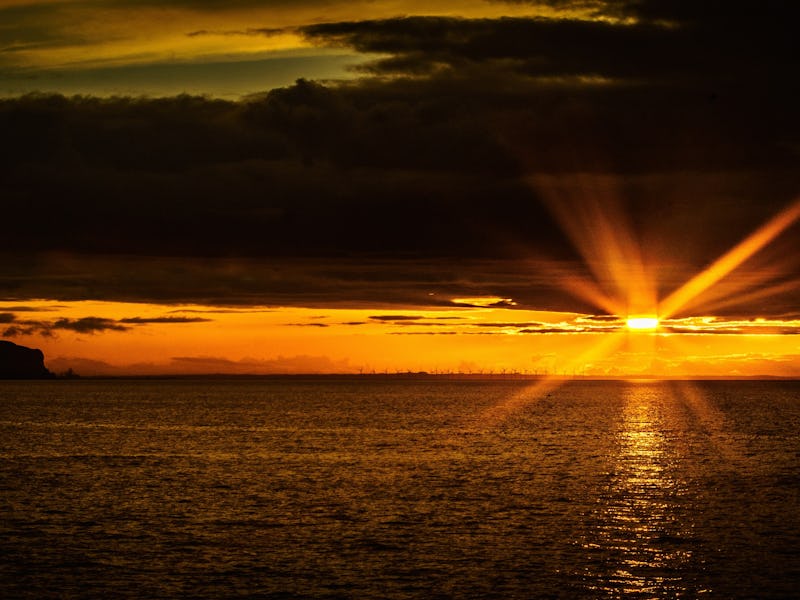A planet-killer asteroid that intersects Earth's orbit was just spotted — and there could be more of them
The brief moments of twilight offer astronomers the best chance of spotting near-Earth asteroids that hide within the Sun’s glare.

“Planet killers” are as scary as they sound: asteroids larger than one kilometer in diameter that pose a potential risk to Earth, according to astronomer Scott Shepard who has been looking for them, and other space rocks, in a seemingly bizarre place: the glare of the Sun. Recently his team spotted two rocks that fit that frightening title.
Twilight is the best time to search for asteroids that fly around between the orbits of Venus and Earth. These ten-minute windows of time at dusk and dawn have afforded astronomers the right conditions to spot three previously-unknown, near-Earth asteroids. “Planet killer” size is expected for two of them. And one of these asteroids has an orbit that may someday place it in Earth’s path, a noteworthy trait since the big rock is roughly the diameter of four Empire State Buildings.
An artist’s impression of an asteroid that orbits closer to the Sun than Earth’s journey around the star.
Why it matters — This asteroid, the 1.5 kilometer-wide 2022 AP7, “is likely the largest Potentially Hazardous Asteroid (PHA) discovered in about eight years,” says Shepard, an astronomer at the Earth and Planets Laboratory of the Carnegie Institution for Science. He and fellow asteroid hunters published their work on September 29 in The Astronomical Journal. Representatives from the National Science Foundation’s NOIRLab Program announced the asteroid findings on Monday (October 31).
“We expect to find a few more planet killer 1 km or larger NEOs [Near-Earth objects] in our survey over the next year or two,” Shepard tells Inverse.
There is a balm of sorts to all this. Astronomers already know about 95 percent of most near-Earth asteroids. And some of the “planet killers” like 2021 PH27 — the other larger-than-1-km asteroid — are constrained in complete and safe orbits closer to the Sun. With this new ongoing work, humanity will learn about the last few remaining.
What they did — The ones that have evaded the asteroid census up until now are in a telescopic blindspot.
Twilight offers muted sunlight that’s conducive to finding objects closer to the Sun than Earth, Shepard says.
“The twilight period is the first 10 minutes or so after the Sun sets or 10 minutes before the Sun rises,” Shepard says. “It is the time when asteroids that are near the Sun are still above the horizon and in somewhat dark skies, but the Sun has not fully washed them out with its light yet.”
Most other NEO surveys observe the whole sky. But at night, when they are operating at peak viewing conditions, a given observatory is facing away from where many unknown objects lurk.
How it works — “To do these observations requires putting the telescope at its horizon limit,” Shepard says, “as such a large sensitive instrument does not go fully to the horizon.”
The international team’s survey did this with the Dark Energy Camera (DECam). “The camera itself is as big as a small car,” Shepard says. It’s mounted on the Víctor M. Blanco 4-meter Telescope at Cerro Tololo Inter-American Observatory in Chile, part of the NOIRLab program from the National Science Foundation.
What’s next — “We expect there are some 10 to 50 asteroids of 1 km or so in size that have yet to be discovered near the Earth,” Shepard says.
As new asteroids are documented, astronomers will categorize their paths through space. Some, for instance, might be embarking on relatively stable trips around the Sun that foster healthy predictions for encounters with Earth. Others, however, might be manipulated into new trajectories. The phenomena behind these alterations — which include the Sun’s heat and the gravity of Venus — will also need to be better understood.
The search for what’s out there can be scary, but creative tools like DECam’s survey might assuage fear of the unknown as it monitors our planetary blindspots.
This article was originally published on